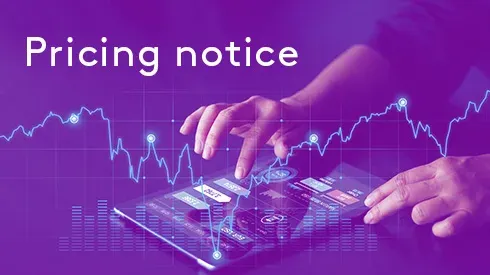Fastmarkets, an industry-leading cross-commodity price reporting agency (PRA), will launch a new suite of green steel prices today, 8 June.
Green steel, also known as low-carbon emission or sustainable steel, refers to the production of steel using environmentally friendly and energy-efficient processes that minimize carbon dioxide (CO2) emissions. Traditional steel production methods, such as the blast furnace route, are highly carbon-intensive and contribute significantly to global greenhouse gas emissions.
Our new green steel benchmarks will assess the price differential against traditional flat steel prices, creating transparency for the industry and supporting the investment decisions needed to reduce emissions.
These prices are a world first and serve an important need – demand for sustainable steel continues to grow.
The decarbonization of Europe’s steel industry is being driven by the EU’s emissions trading system (ETS), as well as growing demand among downstream sectors including the automotive industry.
Steelmaking accounts for 7-9% of global CO2 emissions, the majority of which come from coal-based blast furnaces. Most steel produced from traditional blast furnaces emits around two tonnes or more of CO2 for each tonne of steel produced.
Many steelmakers have announced large investments to replace their blast furnaces with scrap-based electric-arc furnaces (EAFs) and a shift to hydrogen-reduced iron plants.
Fastmarkets’ green steel, domestic flat-rolled differential ex works Northern Europe will be assessed weekly against the established Fastmarkets Northern European hot rolled coil (HRC) index.
A daily inferred green steel base price will also be calculated based on the Fastmarkets HRC index and the green steel differential to provide real-time transparency.
The green steel prices will capture the differential between traditional flat-rolled steel prices and prices for steel produced with emissions (including scopes 1, 2 & 3) of a maximum of 1 tonne CO2 per tonne of steel.
All production methods and raw materials will be considered, including scrap-based production and steel made from hydrogen-reduced iron.
In parallel, Fastmarkets has continued to develop its price series for high-grade iron ore, metallics and ferrous scrap.
Andrew Wells, global steel and ferro-alloys editor at Fastmarkets, said: “Following extensive research and discussions across the industry, we are well-placed to bring clarity and transparency to a market that is fast becoming a priority area for all steel industry players committed to the energy transition. Steel made with significantly reduced CO2 emissions is widely expected to account for 30% of the European market by 2030.”
Raju Daswani, CEO of Fastmarkets, added: “The transition to green steel production is a significant step towards achieving carbon neutrality and addressing climate change. It aligns with global efforts to reduce greenhouse gas emissions and build a more sustainable and low-carbon economy. We are excited to work with the industry on its decarbonization journey and help define, measure and communicate green standards and prices to support this transition.”






